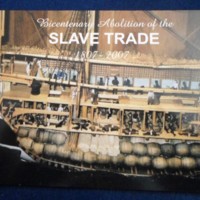
Response of Jacqueline and Sonia Brooks
As descendants of enslaved Africans, Jacqueline and Sonia Brooks expressed their own independent responses to the bicentenary. Jacqueline designed a limited edition postcard to display the horrors of a slave ship. Sonia wrote the poem Amazing Trade, which was performed during the National Maritime Museum's programme for Slavery Remembrance Day.
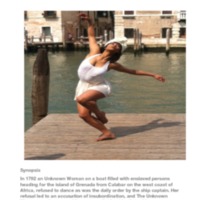
The Woman Who Refused to Dance
In Autumn 2007, the opera 'The Woman Who Refused To Dance' by composer and conductor Shirley J Thompson was performed at Westminster Palace, Houses of Parliament. The piece was based on a 1792 print by Isaac Cruickshank - entitled 'The abolition of the slave trade, or the inhumanity of dealers in human flesh exemplified in the cruel treatment of a young negro girl of 15 for her virgin modesty' - depicting a woman who refused to dance on board a slave ship, and who was hung from one leg as punishment. The opera has recently been re-premiered to mark the 210th anniversary of the abolition of the transatlantic slave trade.
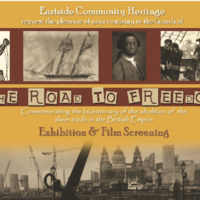
The Road to Freedom
Eastside Community Heritage worked with young people from West Ham and Stratford to explore the significance of the bicentenary within the context of their own history in London and in British history more widely. The Road to Freedom project was devised by the young people themselves, who gathered information from the Museum of London Docklands, the National Maritime Museum, the International Slavery Museum and the Birmingham Museum and Art Gallery. Their research led to a documentary-drama and an exhibition which toured venues in Newham, accompanied by discussion sessions led by the participants.
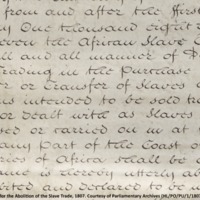
For Love of Sugar
Commissioned by 2007's City of London Festival, artist Satch Hoyt created several sculptures made only of sugar. In St Paul's Cathedral, life-sized portraits of influential black figures - including Olaudah Equiano, Ignatius Sancho and Mary Seacole - were made of painted sugar cubes. Hoyt also created two slave ships from sugar, displayed at Museum of London Docklands.
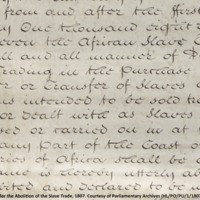
Seeing Slavery
The Potteries Museum and Art Gallery in Stoke-on-Trent held the Seeing Slavery exhibition from October to December 2007, with an associated programme of events and activities. Objects from the museum's collection relating to slavery and abolition were on display, including an 18th century punch bowl, inscribed with 'Success to the Africa Trade'. The museum commissioned new work by the artist Pogus Caesar: the piece '80 lbs of chains' included a soundscape depicting the sounds of a slave ship. The museum held digital workshops in which visitors were able to create their own soundtrack to the exhibits.
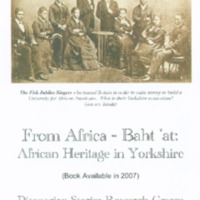
From Africa - Baht 'at: African Heritage in Yorkshire
The Diasporian Stories Research Group includes writers, historians, educators and performing artists working to uncover Black history associated with Yorkshire. To mark the bicentenary, the group published its first book 'From Africa Baht 'at', exploring links between Yorkshire and the Atlantic trading world. This included influential Black men and women who lived in or visited Yorkshire, and the shipbuilding industry of the Yorkshire coast that supplied ships for slaving voyages. The Fisk Jubilee Singers toured Britain in order to raise money to build a University for African-Americans. One of the singers settled in Yorkshire.
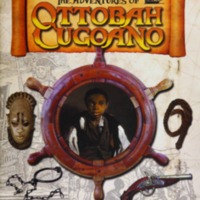
The Adventures of Ottobah Cugoano
The Adventures of Ottobah Cugoano is a book written for young readers, written by Marcia Hutchinson and Pete Tidy, and published by Primary Colours as part of the Freedom and Culture 2007 initiative. Ottobah Cugoanao was an African abolitionist, captured in 1770 in Fante (present-day Ghana) and sold into slavery. He was eventually made free and baptized John Stuart in London. Stuart became active in Sons in Africa and through his publications campaigned for abolition. A Key Stage 2 and Key Stage 3 Teaching Pack was produced to accompany the adventure story, written by Marcia Hutchinson, Pete Tidy and Shazia Azhar, with a foreword by David Lammy MP.
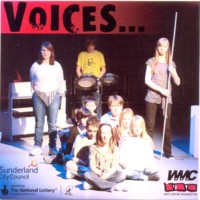
Voices...
A collaborative project between Arts Centre Washington's Youth Theatre and Washington Music Collective, providing development of live music activities for young people within Washington and the surrounding areas. The project involved improvisation, creative writing, music and drama workshops for young people during school holidays, and culminated in a thirty minute play around the themes of slavery. A DVD was produced featuring musical shorts and video diaries of the young actors' experiences. One theme covered was the limbo dance, originating in Trinidad and Tobago, and with symbolic links to enslaved people entering the galleys of a slave ship.
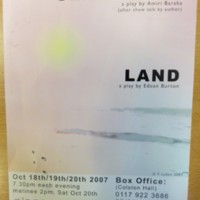
Slave Ship and Land
Two plays, Slave Ship by Amiri Baraka and Land by Edson Burton, were presented in Bristol by Say It Loud, a multicultural arts development organisation. Slave Ship was first performed in the United States in 1967. Land was written especially for the bicentenary project. In conjunction with the project, Say It Loud organised drama workshops on the subject of slavery in Bristol schools.
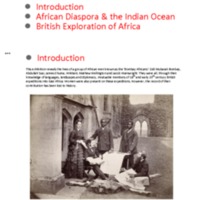
Bombay Africans
Bombay Africans 1850-1910 was exhibited at the Royal Geographical Society as part of the wider ‘Crossing Continents: Connecting Communities’ project, which with community partners aimed to develop new resources to advance the importance of geography. Based on the research of Clifford Pereira and with community consultation partners, Bombay Africans explored the histories of a group of African men who assisted British explorers such as John Hanning Speke, Richard Burton and David Livingstone on mapping expeditions in East Africa in the late 19th century. The name 'Bombay Africans' was given to Africans who had been rescued from the slave ships operating in the Indian Ocean. The exhibition examined the roles of these men in the anti-slavery movement and in Christian organisations like the Church Missionary Society. Focusing on the East Coast of Africa and the slave trade routes in the Indian Ocean, the exhibition also explored enslavement, forced migration, liberation and the African diaspora in the Asian subcontinent.
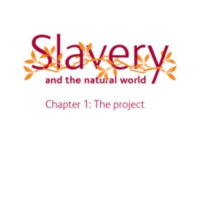
Slavery and the Natural World
In consultation with local community groups, in 2007 the Natural History Museum commissioned new research into its collections that link slavery and the natural world. The research uncovered experiences of enslaved people and the use of plants in their everyday life, as food, medicines and poisons. It also examined the complex relationships between enslaved people and naturalists exploring newly-colonised lands. The museum ran a series of public events, co-hosted by Race on the Agenda, which aimed to bring the historical, scientific and public viewpoints together. It created online educational resources on themes such as Commercial Plants, Everyday Life, Diet and Nutrition, and Resistance. The museum also developed cross-curricular ideas for school lessons in Science using the context of slavery, looking at foods across different cultures, for example.
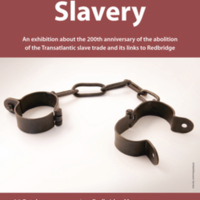
Redbridge and Slavery
Redbridge Museum's exhibition to mark the bicentenary examined the London Borough of Redbridge's connections to the slave trade and abolition. These links included local resident Josiah Child, once Governor of the East India Company, an investor in the Royal African Company and owner of plantations in Jamaica. The Mellish family of Woodford had connections with the West India Docks in London, built for the sugar trade. Alexander Stewart of Woodford owned Jamaican plantations and acted on behalf of owners of enslaved Africans in compensation claims after abolition. The exhibition also examined church records detailing some of the Black residents of Redbridge in the 17th and 18th centuries. Music from the Caribbean island of Dominica was included, as was a series of personal responses to the bicentenary by local residents.
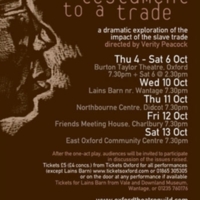
Testament to a Trade
Testament to a Trade was a play produced to mark the bicentenary, with close reference to Oxfordshire. Written by three local writers, the play was produced by Oxford Theatre Guild in collaboration with Oxfordshire Record Office and the Oxford Playhouse. Testament to a Trade weaves accounts of past and present slavery, and is situated in historical and contemporary contexts, notably 18th century Africa and Oxford, and contemporary Eastern Europe and Oxford. A number of archive materials relating to slavery and abolition are held by Oxfordshire Record Office, information on which inspired elements of the story. A teachers pack was produced to inform similar projects. The play opened at Burton Taylor Theatre in Oxford, and toured venues across Oxfordshire.
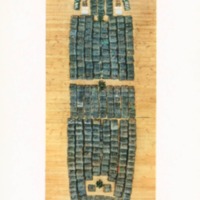
La Bouche du Roi
La Bouche du Roi was created by artist Romauld Hazoumé, who lives and work in the Republic of Benin, West Africa. The multi-media artwork is named after a place on the coast of Benin from where enslaved Africans were transported. It comprised 304 plastic petrol can 'masks', each representing a person, arranged in the shape of the woodcut of the Liverpool slave ship Brookes. The aroma of tobacco and spices are represented alongside the terrible smells of a slave ship. The artwork was accompanied by a film showing the motorcyclists who transport petrol illegally between Nigeria and the Republic of Benin. The cans and motorcyclists are metaphors for modern forms of enslavement and resistance. First exhibited at the British Museum in London, La Bouche du Roi toured to the following venues during 2007-9: Ferens Art Gallery in Hull, International Slavery Museum in Liverpool, Bristol's City Museum and Art Gallery, Laing Art Gallery in Newcastle, and the Horniman Museum in London.
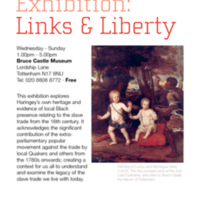
Links and Liberty
An exhibition at Bruce Castle Museum (in partnership with Euroart Studios) explored the transatlantic slave trade, Haringey's heritage relating to the trade and its legacy, and the historic Black presence in the borough from the 16th century onwards. There was a particular focus on the painting of Lucius and Montague Hare, sons of Lord Coleraine (former owner of Bruce Castle), with their African servant. The exhibition also looked at the extra-parliamentary popular movement against the trade by local Quakers such as Priscilla Wakefield and others. Contemporary dance workshops for secondary schools were led by dance company Movement Angol.
The Links and Liberty exhibition included 'Stolen', a life-size installation by artists at Euroart Studios (John Fowler, Lorraine Clarke and Nigel Young) of a section of a slave ship. School pupils were encouraged to climb inside to imagine conditions on board.
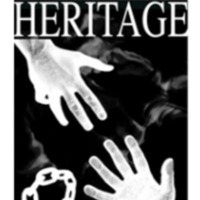
Dark Heritage
Dark Heritage from Bee Arts Community Interest Company comprised The DARK, a sonic art installation, and accompanying participatory educational activities. The DARK touring installation is a pitch black space designed to bring home the horrors of the transatlantic slave trade in the 18th century. The three dimensional soundscape uses ghosts as metaphors for the hidden aspects of the past, based on the Liverpudlian slave-ship worker Edward Rushton, slave ship Captain John Newton, and Kunie, an African man who met Rushton aboard an American ship. A programme of public sessions and creative educational workshops aimed at schools, colleges, youth and community groups were produced in collaboration with Kingswood Primary School in Lambeth. Dark Heritage travelled to six locations in the UK in 2007-08 starting in Greenwich, travelling to Ipswich, Gloucester, University of Hertfordshire, Norwich and finishing in Manchester.
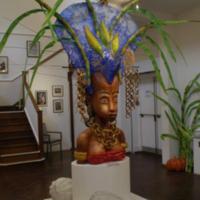
Parallel Views: Black History in Richmond
The Parallel Views exhibition and its associated community engagement programme explored the relevance of the bicentenary for communities in the London Borough of Richmond upon Thames, uncovering local associations with slavery and its abolition. It also told the parallel story of twin town Richmond, Virginia, USA, to broaden understanding of the transatlantic slave trade and the impact of its demise. The exhibition examined evidence of individuals of African origin who had come to Richmond, and residents with financial links to slavery and the slave trade, and to abolitionism. A film piece by choreographer and dance historian Dr Rodreguez King-Dorset explored the use of dance within the free Black community in London during the era of abolition. A display of contemporary artwork responded to the ideas of the exhibition. A sculpture by carnival artist Carl Gabriel linked consumers in Richmond and the conditions of production of slave-grown crops. The design was inspired by a series of workshops with local families. Artist-led workshops for children and young people led to the creation of a carnival costume piece which was included in the exhibition.
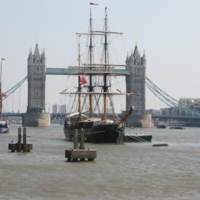
Spirit of Wilberforce
The Centre for Contemporary Ministry (CCM) is an educational charity specialising in the study of contemporary social issues. The CCM established a slavery exhibition at their base, Moggerhanger Park in Bedfordshire, once country home of members of the Thornton family, cousins of William Wilberforce. A mobile travelling display toured local venues. ‘Free at Last?’ was also part of the Spirit of Wilberforce project. This initiative saw a replica of the 18th century slave ship ‘Zong’ sail into London on 29 March 2007. The replica ship was accompanied up the River Thames by HMS Northumberland as part of the Royal Navy’s contributions to the bicentenary. The ‘Slavery Past and Present’ exhibition on board the replica was opened by the Mayor of London – a virtual reality display depicted conditions on a slave ship. The exhibition continued at the church All Hallows by the Tower, exploring the work of the abolitionists and the legacy of slavery. HMS Northumberland also opened to the public - an exhibition on board explored the role of the Royal Navy in enforcing the 1807 Act.
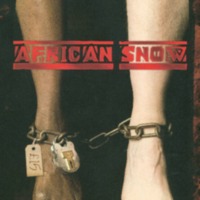
African Snow: Secrets of the Trade
In conjunction with York Theatre Royal, Riding Lights Theatre Company produced a new play written by Murray Watts, directed by Paul Burbridge, with original music by Nigerian musician Ben Okafor. African Snow: Secrets of the trade was originally commissioned by the Church Mission Society, an organisation founded in 1799 by representatives of the abolition movement, including William Wilberforce. The play sought to explore the ideas associated with antislavery and how they can be put to use in the modern day campaign for the end of slavery. Opening at York, the play went on to have a West End Transfer followed by a national tour. The main characters are John Newton, the converted slave-trader who later wrote 'Amazing Grace', and the former slave and abolitionist Olaudah Equiano. The play saw them confronting each other’s differing perspectives, creating a dialogue in which the audience could witness alternative views towards slavery. A 'snow' was a class of ship, commonly used for the transportation of slaves. 'The African' was the first slave ship on which John Newton sailed.
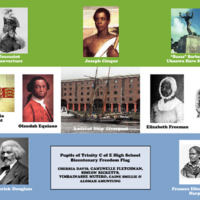
Bicentenary Freedom Flag
The Bicentenary Freedom Flag was displayed alongside an exhibition about Wartime Black History at Manchester Town Hall. The project was a collaboration between staff from Manchester City Council Corporate Services Black Staff Group and pupils of Trinity Church of England School in Manchester. The flag recognised the work, struggles and sacrifices of those who brought the slave trade to an end, and featured images of prominent individuals on the background of the Sierra Leone flag. Those featured on the flag included Toussaint L'Ouverture (General of the Haitian Uprising), the abolitionist Olaudah Equiano, the anti-slavery orator Frederick Douglass, the statue in Barbados of 'Bussa', the unknown slave, guide of the Underground Railroad Harriet Tubman, and Joseph Cinque, leader of the Amistad slave ship revolt. The accompanying exhibition included pupils' articles and creative writing. It also examined the history and role of the West India Regiments, British colonial infantry regiments largely recruited amongst freed slaves from North America and slaves purchased in the West Indies.